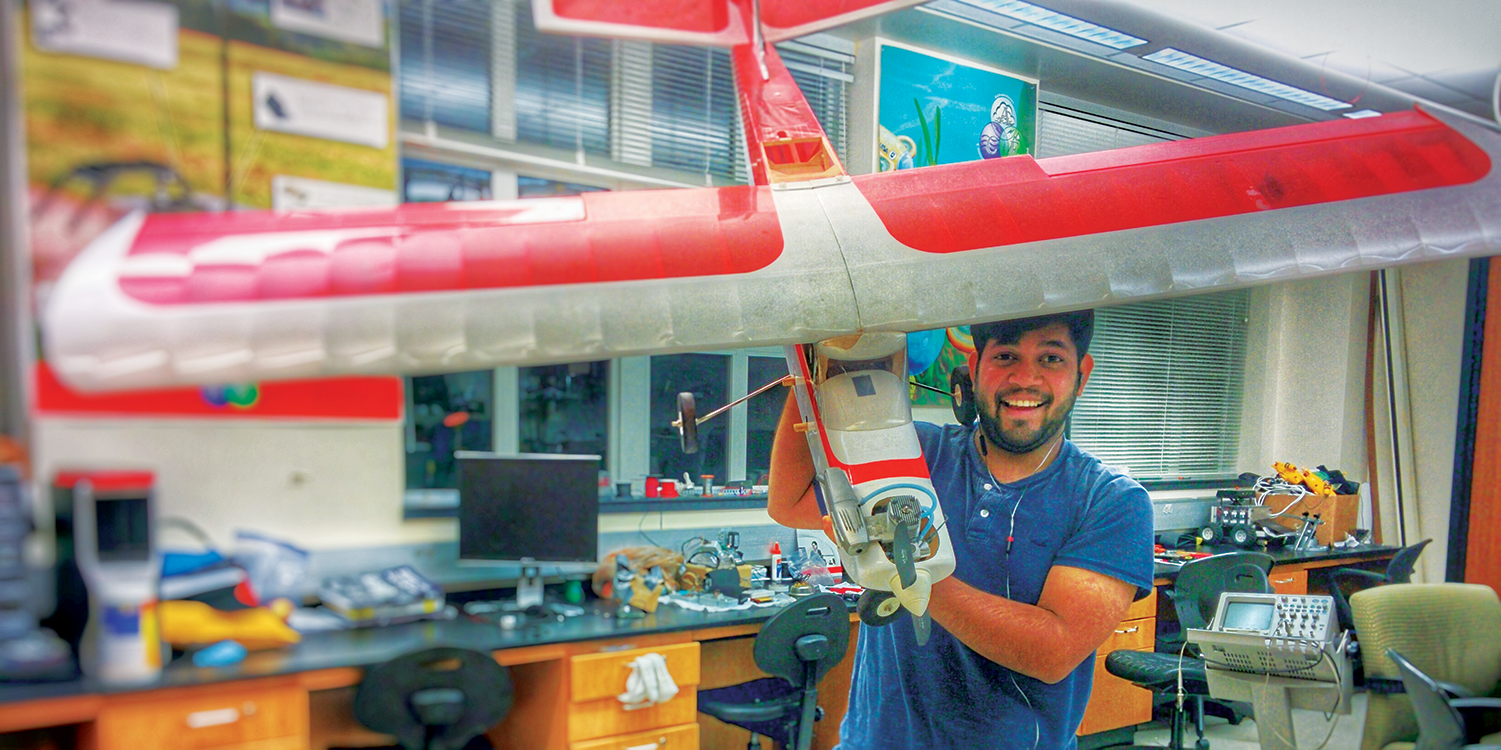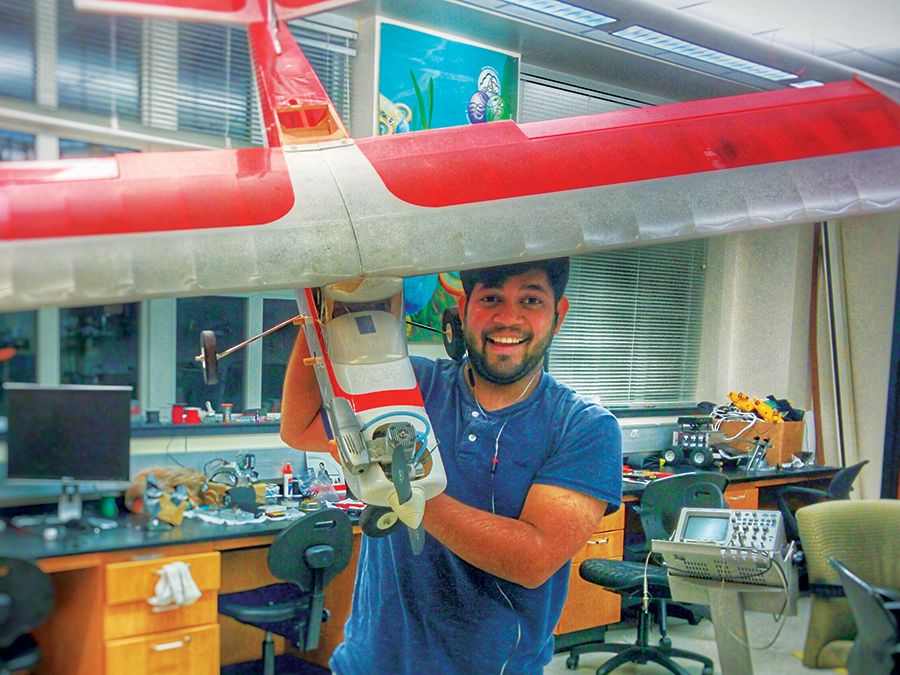
Prototype King

Prototype King
Originally Posted 1/14/2019 |
FROM THE WINTER/SPRING 2019 ISSUE
Abhijit Majumdar is an electrical engineering graduate student. He not only mentors students and teaches the fundamentals of robotics but also works in UTSA’s Autonomous Controls Engineering Lab, which develops capabilities for self-driving vehicles. Among his peers and professors, Majumdar is known for his ability to prototype inventions.
Can you describe some of the prototypes you have built? My research focus is on intelligent self-learning robotics. This led me to develop prototypes for different kinds of drones, an AI system to securely monitor an area, and alert authorities for abnormalities. I’ve also developed simulations for autonomous cars learning to drive and therefore avoid obstacles along a path while they navigate toward a goal. To help the elderly or blind population walk through a cluttered area, I constructed a smart walker, and in agriculture, I built a monitoring device to measure the content of nitrogen in plants during fertilization.
“I like to think of myself more as an innovator.”
How do you see yourself—as entrepreneur or innovator? I like to think of myself more as an innovator, since I wouldn’t want myself to be constrained with profit margins. I just like to try some cool inventions. Although, I would like to see my innovations put to good use and benefit others.
How does it feel to already have patents under your belt and how many do you have? It is exciting to see my research actually being useful to the community. The patent is just a step in formulating the work into a viable product. Currently, I have one filed and another in the process.
Is innovation something that you work at like a muscle? Definitely. You need to keep at it all the time. But that is what brings in the drive to do it, the prospective result of the effort and the understanding on how one’s innovation could be useful to others.
How do you feed your curiosity? How do you get inspired to create? Keep exploring and never stop looking. It is usually difficult to convince me that something works in a particular way without providing enough proof, and that is what I seek. Your mentors might not always be available to answer all of your questions; however, they can point you in the right direction. That is usually enough for me to start digging deep into what, how, and why something works. Inspiration to create is easy, once you learn how something works.
“I just like to try some cool inventions.”
What are your plans after UTSA? I have been hired as an artificial intelligence robotics engineer at PlusOne Robotics [where he works since graduating in December]. The company makes smart autonomous robots that will work to better handle logistic operations in harmony with humans.
Name a person who inspires you? It’s not a surprise, but my greatest inspiration is my dad. He’s a research scientist at the Central Institute for Cotton Research and develops harvesting machinery. He builds and develops prototypes; however, the most inspiring undertaking from his work is when his prototypes and ideas are finally realized into products and put to practical use.
What advice do you give your friends? Hungry raho, which in Hindi translates to stay hungry. This was advised by a friend, Ruta Dandekar, who intended to say, “Always stay hungry for food, exploration, curiosity, work, and life.”

